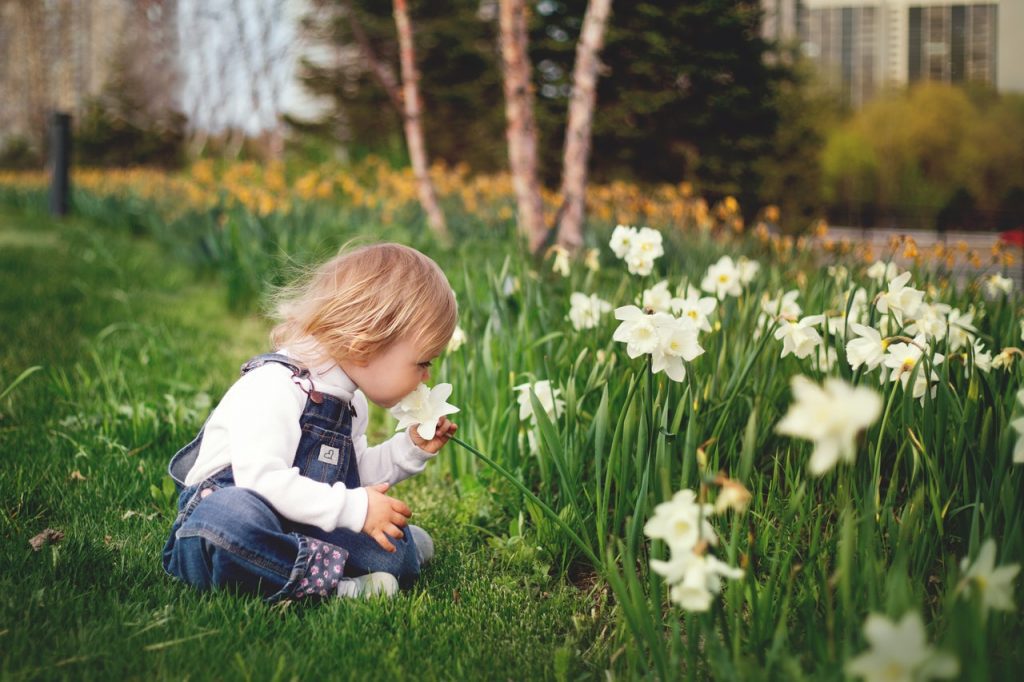 For the last four months, one of my children has been attending play therapy to work through some anxiety. I’m super thankful for the cool down and regulation techniques we’ve learned together in this season, so I thought I’d share some of our favorites with you.
For the last four months, one of my children has been attending play therapy to work through some anxiety. I’m super thankful for the cool down and regulation techniques we’ve learned together in this season, so I thought I’d share some of our favorites with you.
Quick note: Depending on your child’s age and emotional maturity, some of these techniques will be somewhat of a dance between the two of you. In other words, you may need to participate and model these for children under six, even after they’ve learned them. For example, when my four year old needs a cool down, we sit together. I will start one of the strategies below, and when he’s ready, he joins me.
1. Smell the Flower, Blow Out the Candle
This is an oldie but a goodie. Start by making a fist, and ask your child to smell the flowers. (If flowers aren’t his thing, tell him to smell the pizza, the cookie, etc. You get the idea.) This encourages the child to take a deep breath in through the nose.
Then, hold up one finger on the other hand and ask the child to blow out the candle. This encourages him to blow out through the mouth.
Both of these actions naturally slow the heart rate and encourage circulation. I do this with my child at least five to 10 times for the most calming effect.
2. Magic Mustache
This is a technique that originated with Karyn Purvis, an expert on counseling children who have experienced trauma, but this works for all kids (and adults, too!).
Place the index finger between the nose and upper lip, creating a “mustache.” Simply asking a child to do this will likely snap them out of his or her fit because it seems silly at first, but there’s a science behind it. Once your child makes his or her mustache, encourage him or her to take five deep breaths in through the nose and out the mouth.
3. Seated Pull Up
Sometimes kids just need a place to direct tension. In this case, ask your child to do a seated “pull up.”
Sit in a chair with two feet on the ground, and hold each side of the chair near your hips. Sit up very straight and pull up, as if you’re attempting to lift the chair. Hold for three to five seconds and release. Repeat as many times as needed.
This is great for older kids, especially if they need a discreet calming technique to employ during school.
>> RELATED READ :: Yoga, Meditation, & Mindfulness Tips for Kids <<
4. Breathing Games
There are many easy ways to make deep breathing fun:
- Get out the play clay and practice making food. After your child has patted out a pizza or molded a cookie, encourage him or her to smell it before putting it in a pretend oven.
- Grab a balloon and ask your child to blow it up.
- Buy a pinwheel at the dollar store and ask your child to make it spin.
- Put some feathers on the table and ask your child to blow them across the table with a straw. The options here are endless.
>> RELATED READ :: 5 Self-Care Tips for Busy Parents <<
5. Shock Factor
So, this isn’t really a calming technique, but I’m throwing it in here at the end because it helps when one of my kids is intensely melting down. Sometimes a child is too enraged or out of control to be able to use a calming technique. These are the moments when his or her brain is literally in fight/flight/freeze, and nothing you say will snap him or her out of it.
What I’ve learned works best in this moment is to employ some shock factor. I literally lay down on the ground in the middle of the room. (Maybe don’t try this in public.) A simple, out-of-the-ordinary action like that will snap your child out of the fit, and one of two things will happen: He or she will either laugh at you, or go silent.
Either way, at that point, you’ve won.
Now they’ve stopped the fit long enough that they can move into the brain space where a deep breathing technique can work effectively. At this point, employ one of the strategies above. Credit for this technique goes to Daniel Siegel, author of No-Drama Discipline. I highly recommend his book.
 We All Feel It All
We All Feel It All
Here’s the bottom line: We’re all in unprecedented territory here, post-pandemic. ALL OF US. Anxiety is through the roof, and we are all going to need to give ourselves and our children heaps of grace. Don’t be afraid to model cool downs for your kids. It’s okay to show your children that you have a wide range of emotions, too.
Take a break when you need it, apologize when you’ve snapped, and, most important, remember that this too shall pass.














